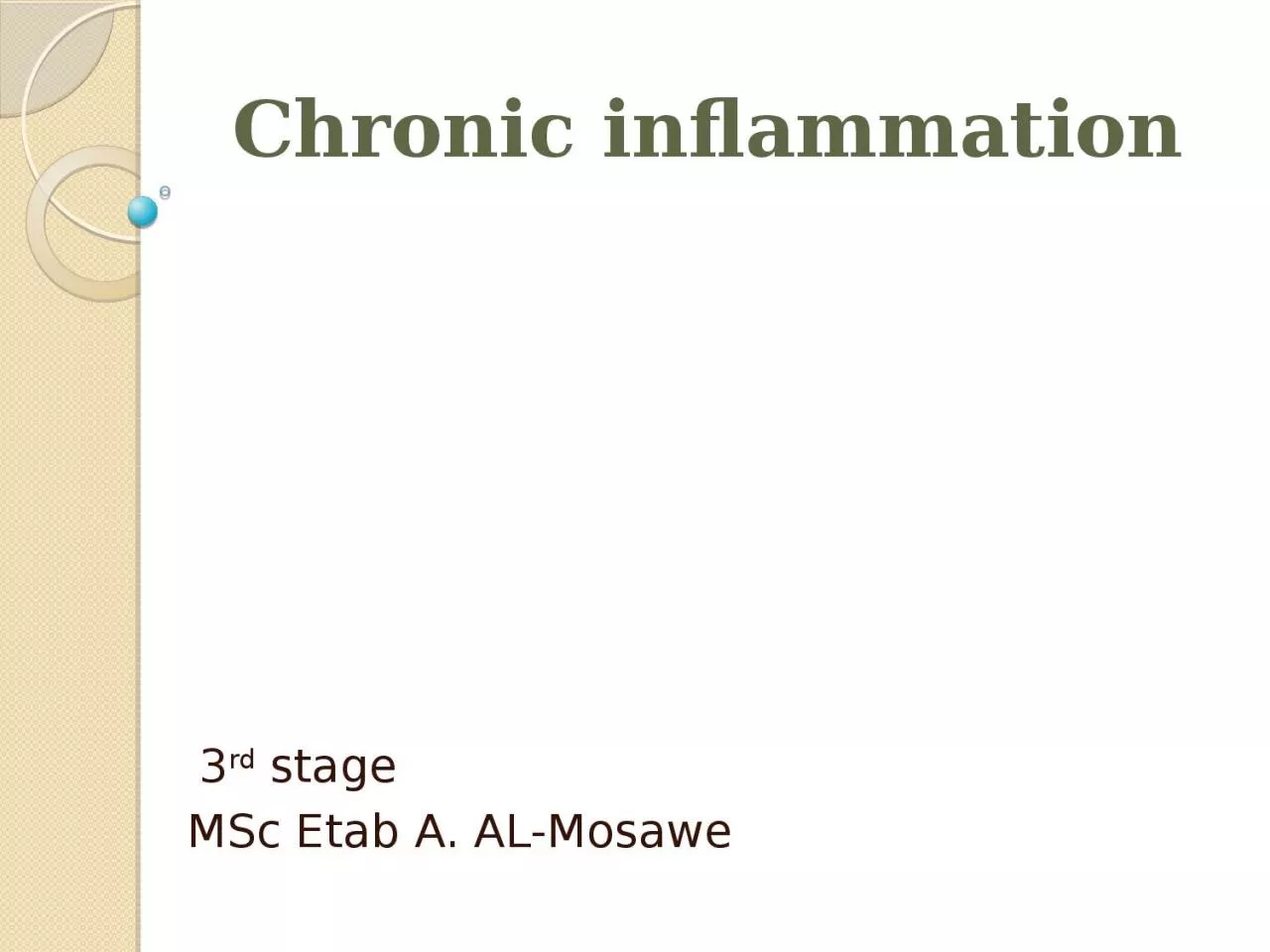

stage MSc Etab A AL Mosawe Tuberculous lymphadenitis is a chronic specific granulomatous inflammation with caseation necrosis The characteristic morphological element is the tuberculous granuloma ID: 933769
Download Presentation The PPT/PDF document "Chronic inflammation 3 rd" is the property of its rightful owner. Permission is granted to download and print the materials on this web site for personal, non-commercial use only, and to display it on your personal computer provided you do not modify the materials and that you retain all copyright notices contained in the materials. By downloading content from our website, you accept the terms of this agreement.
Slide1
Chronic inflammation
3
rd
stage
MSc
Etab
A. AL-
Mosawe
Slide2Tuberculous lymphadenitis is a chronic specific granulomatous inflammation with
caseation necrosis
. The characteristic morphological element is the tuberculous granuloma (caseating tubercule) : giant multinucleated cells (Langhans cells), surrounded by epithelioid cells aggregates, T cell lymphocytes and few fibroblasts.
Slide3Tuberculous granuloma
.
Multinucleated giant cell (mature - Langhans type) : 50 - 100 microns, numerous small nuclei (over 20) disposed at the periphery of the cell (crown or horseshoe), abundant eosinophilic cytoplasm. It results when activated macrophages merge. Epithelioid cells are activated macrophages resembling epithelial cells : elongated, with finely granular, pale eosinophilic (pink) cytoplasm and central, ovoid nucleus. They have indistinct shape contour and form aggregates. At the periphery are the
lymphocytes (T cells)
and rare plasma cells and fibroblasts. Caseous necrosis is a central area, amorphous, finely granular, eosinophilic (pink). If recent, it may contain nuclear fragments. The caseum is the result of giant cells and epithelioid cells destruction.
Slide4Tuberculous granuloma
Slide5Pulmonary tuberculosis. Tuberculous granuloma is localized in the pulmonary
interstitium
, compressing the surrounding alveoli and destroing the parenchyma. (Hematoxylin-eosin, ob. x4) (For detailed histological description of granuloma.
Slide6Tuberculous granuloma in the pulmonary interstitium
.
Slide7Tuberculous granuloma in the pulmonary interstitium
.
Slide8Microscopically, foreign body granuloma to suture material (nylon, silk) contains multinucleated giant cells, with haphazardly arranged nuclei. These giant cells are fused
macrophages
. The foreign body is birefringent, and sometimes may be visible by polarized light in the middle of the granuloma or inside the giant cells. These granulomas are non-necrotic.
Slide9Healing (repair) by connective tissue has the granulation tissue as a hallmark. It consists of new capillaries (result of proliferation of endothelial cells - angiogenesis or neovascularization) in an edematous atmosphere of fibroblasts (spindle shaped),
myofibroblasts
, mononuclear inflammatory cells, macrophages, neutrophils, cellular debris. (Hematoxylin-eosin, ob. x10)
Slide10Pulmonary vein completely obliterated by a thrombus with organization. The thrombus was replaced by an immature granulation tissue, rich in newly formed capillaries, fibroblasts, collagen and reduced inflammatory infiltrate. (Hematoxylin-eosin, ob. x4)